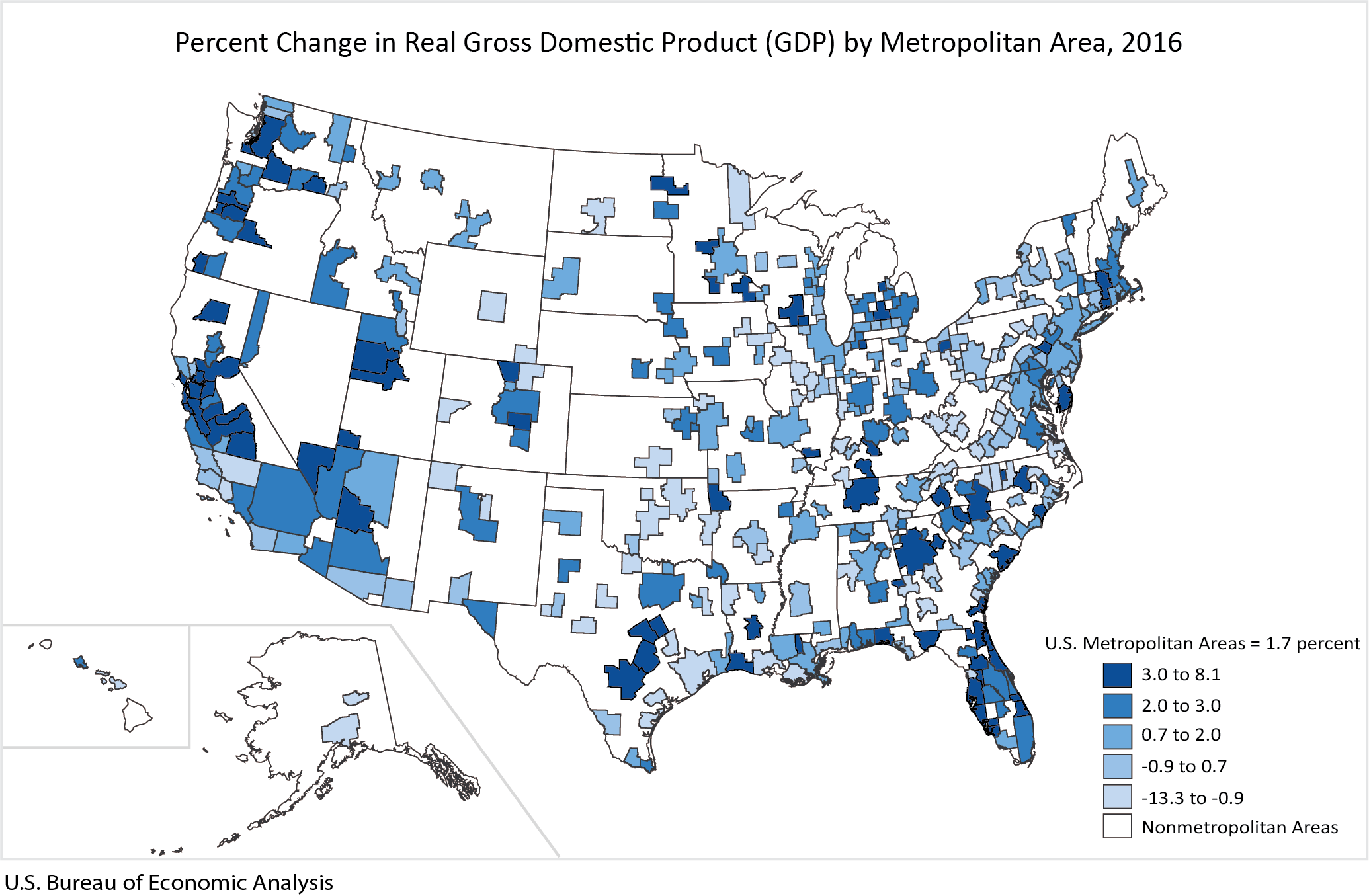Economy Watch: Most Metros Enjoyed Growth in ’16
The finance, insurance, real estate, rental and leasing industries contributed to GDP growth in 217 of the 382 metro areas recently examined by the Bureau of Economic Analysis.
By D.C. Stribling, Contributing Editor
Real gross domestic product increased in 267 out of the 382 U.S. metropolitan areas in 2016, according to a recent Bureau of Economic Analysis report. Within the metros, there was some variation. Real GDP growth year-over-year by metro area ranged from up 8.1 percent in Lake Charles, La., and Bend-Redmond, Ore., to a drop of 13.3 percent in Odessa, Texas, presumably due to the energy sector’s contraction.
The sectors of the economy that stimulate demand for office space enjoyed considerable growth in most metros, BEA data revealed. For instance, professional and business services grew 2.7 percent across the nation’s metropolitan areas in 2016. That industry contributed to growth in 273 metro areas, most notably in Oshkosk-Nennah, Wis., and Ocala, Fla., which grew 2.6 percent and 5 percent, respectively.
Information services grew 6.5 percent. That industry contributed to growth in 260 metropolitan areas, and was the leading contributor to growth in Provo-Orem, Utah, and Seattle-Tacoma-Bellevue, which grew 6.1 percent and 4.3 percent, respectively.
Finance, insurance, real estate, rental and leasing grew 1.2 percent. These industries contributed to growth in 217 metropolitan areas, and made major contributions to growth in Elizabethtown-Fort Knox, Ky., and Saint Cloud, Minn., which grew 4.6 percent and 5.3 percent, respectively.








You must be logged in to post a comment.